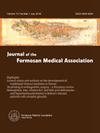共同决策对符合新型口服抗凝剂治疗条件的台湾心房颤动患者的影响。
IF 2.5
3区 医学
Q1 MEDICINE, GENERAL & INTERNAL
引用次数: 0
摘要
背景/目的:共同决策(SDM)可提高患者对病情和治疗的认识,促进患者参与护理决策。这项分两个阶段进行的多中心研究评估了 SDM 对符合新型口服抗凝剂(NOAC)治疗条件的台湾成年房颤患者的影响:方法: 参与研究者均为 NOAC 患者(第一阶段)或有达比加群治疗经验者(第二阶段)。在第一阶段,第一部分参与者(n = 124)在观看有关房颤卒中预防的 SDM 资料前后完成了一份半结构化调查(仅评估理解部分)。调查收集的数据包括对房颤的焦虑、对医护人员的信心、SDM 资料的实用性以及对不同 NOAC 的看法。在第二阶段,第一部分参与者在获得 NOACs 处方后,第二部分参与者完成了另一项调查,以比较 SDM 的影响:结果:在第一阶段,90% 的第一部分参与者在观看 SDM 资料后首选达比加群为 NOAC。在第二阶段,第一部分参与者(87 人)和第二部分参与者(104 人)都完成了另一项调查。第一部分参与者中对房颤感到焦虑的人数较少(P总之,SDM 降低了患有房颤的 NOAC 患者的焦虑感,提高了他们对医护人员的信任度。本文章由计算机程序翻译,如有差异,请以英文原文为准。
Impact of shared decision-making in Taiwanese patients with atrial fibrillation eligible for novel oral anticoagulant therapy
Background/Purpose
Shared decision-making (SDM) promotes patient awareness about medical conditions and treatments, facilitating patient involvement in care decisions. This two-stage multicenter study evaluated impacts of SDM in Taiwanese adults with atrial fibrillation (AF) eligible for novel oral anticoagulant (NOAC) therapy.
Methods
Participants were NOAC-naïve (part I) or dabigatran-experienced (part II). During Stage I, part I participants (n = 124) completed a semi-structured survey (understanding evaluation sections only) before and after viewing SDM materials on stroke prevention for AF. Surveys collected data on anxiety about AF, confidence in healthcare professionals, usefulness of the SDM materials, and perception of different NOACs. During Stage II, part I participants after being prescribed NOACs, and part II participants completed another survey to compare impacts of SDM.
Results
During Stage I, dabigatran was the preferred NOAC after viewing the SDM materials among 90% of part I participants. During Stage II, both part I (n = 87) and part II participants (n = 104) completed another survey. Fewer part I participants were anxious about AF (p < 0.01), and more had confidence in healthcare professionals (p < 0.01) after viewing SDM materials than before. Most part I participants (≥90%) rated the SDM materials as “very helpful”. In Stage II, participants viewing SDM before initiating dabigatran had lower anxiety (part I, 43%; part II, 53%; p < 0.01) and a higher trust (part I, 92%; part II, 84%; p < 0.01).
Conclusion
In conclusion, SDM reduced anxiety and improved trust in healthcare professionals among NOAC-naïve participants with AF.
求助全文
通过发布文献求助,成功后即可免费获取论文全文。
去求助
来源期刊
CiteScore
6.50
自引率
6.20%
发文量
381
审稿时长
57 days
期刊介绍:
Journal of the Formosan Medical Association (JFMA), published continuously since 1902, is an open access international general medical journal of the Formosan Medical Association based in Taipei, Taiwan. It is indexed in Current Contents/ Clinical Medicine, Medline, ciSearch, CAB Abstracts, Embase, SIIC Data Bases, Research Alert, BIOSIS, Biological Abstracts, Scopus and ScienceDirect.
As a general medical journal, research related to clinical practice and research in all fields of medicine and related disciplines are considered for publication. Article types considered include perspectives, reviews, original papers, case reports, brief communications, correspondence and letters to the editor.

 求助内容:
求助内容: 应助结果提醒方式:
应助结果提醒方式:


